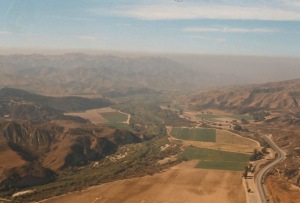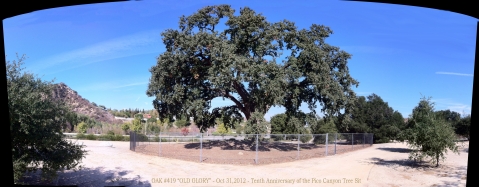 Sustainable Pumping of the Santa Clara River Alluvial Aquifer? – Hardly!
Sustainable Pumping of the Santa Clara River Alluvial Aquifer? – Hardly!
To see SCOPE’s full comments on the Santa Clarita Valley Urban Water Management Plan click here.UWMP SCOPE
Sustainable use of the alluvial aquifer was estimated to be 32,000 AF for the Upper Basin for many years.[1] Prior to the 1986 Slade report its yield was estimated to be even lower. We have attached a compendium of water reports citing those levels. It is interesting to note that the Slade report was commissioned during the housing boom of 1986, and found that more water would be available. As another housing boom developed around 2000, low and behold a 2000 “update” reported that even more water could be pumped from the Santa Clara River. In 2004 a new study conducted under the auspices of the Valencia Water Co claimed that 35,000AF may now be safely taken out of the Santa Clara River, even though the Slade report stated on page 88 of his 1986 report that continued development and hardscaping would reduce recharge to this aquifer.
For the last decade, this amount has been exceeded when pumping by Newhall Land, golf course and private well use is included. [2] It is odd that the agencies’ report ignores this pumping as though it is not occurring when in fact it is substantially exceeding safe yield. This pumping, and the over draft is not indicated on the charts or discussed in the body of the report.
Indications of overdraft of the basin abound, including most evidently the biological indication of vegetative loss in the center of the river from the drop in water levels. This indication is clearly cited in the USGS Circular 1186[3]:
“Ground-water pumping can affect not only water supply for human consumption but also the maintenance of instream-flow requirements for fish habitat and other environmental needs. Long-term reductions in streamflow can affect vegetation along streams (riparian zones) that serve critical roles in maintaining wildlife habitat and in enhancing the quality of surface water. Pumping-induced changes in the flow direction to and from streams may affect temperature, oxygen levels, and nutrient concentrations in the stream, which may in turn affect aquatic life in the stream.” 
We believe the agency has purposely ignored the issue of overdraft and subsidence because there is a real and obvious problem. It is imperative that a study of this issue be conducted due to the well-known fact that subsidence may preclude aquifer re-charge due to soil compression. Taking such a risk with our limited water resources is not acceptable.
The alluvial aquifer is currently at low water levels not seen since 1991[4]. This problem was clearly brought to light in April of this year when the SWP foothill feeder was closed for one week, eliminating imported water for the upper basin area. Apparently, alluvial ground water wells reached such a low level, that they broke air and produced cloudy water for residential customers during this time. [5]
Loss of alluvial well production is also documented in the latest Whittiker Bermite NPDES Report[6] which states:
“Since June 9, 2015, the high flow well 75-MW-35 has not been functional due to pump operational issues associated with low water levels in the well. Additionally, the low flow wells do not produce enough groundwater, if any, to allow treatment and
discharge to the storm drain. Due to the significant decline of the groundwater levels in the Northern Alluvium, all the NATP wells have been shut down and are not extracting groundwater for treatment at the NATP. Therefore, no discharge to the storm drain from the NATP occurred during this reporting period.
An untenable UWMP pumping regime is also indicated by the Agencies’ own report on Alluvial Pumping[7] which states beginning on page 3:
“Conclusions – Rainfall records, groundwater level monitoring, and groundwater modeling together indicate that little to no recharge has occurred to the Alluvial Aquifer since the winter of 2010/spring of 2011 rainfall season. The groundwater level monitoring program shows that groundwater levels have declined at a fairly steady rate since that time, as has been observed in other past periods of local drought conditions (such as occurred in 1984 through 1992 and again in 1999 through 2004). The continued decline in groundwater levels that was observed in 2014 at many Alluvial Aquifer wells will continue in 2015 if little to no rainfall and streamflow recharge occurs to the local aquifer systems during the winter of 2014/spring of 2015 rainfall season.
Under this scenario, and assuming there are no new wells or modifications to existingwells and pumping systems, GSI’s primary conclusions regarding the achievability of the target pumping volumes from the Alluvial Aquifer in 2015 are presented in Table 1 and are summarized as follows:
- For the three retail water purveyors combined, the achievable yield from the Alluvial Aquifer in 2015 is likely between 17,100 and 21,800 AFY. The Groundwater Operating Plan’s drought-year target of 27,400 AFY of collective production by the three retail water purveyors will not be achievable if the drought continues through the winter of 2014/spring of 2015 rainfall season.
- The largest shortfall in yield is estimated to occur for VWC. The estimated achievable production volume for VWC wells (between 14,600 and 17,900 AFY in2015) creates shortfalls of (a) 3,600 to 6,900 AFY compared with VWC’s target
production under the Groundwater Operating Plan and (b) 1,100 to 4,400 AFY compared with the 2015 target production volume that was of interest to VWC.
- The estimated shortfalls in groundwater production from the Alluvial Aquifer are notably smaller for SCWD and NCWD than for VWC.
- SCWD’s wells likely can produce between 1,700 and 2,700 AFY from the Alluvial Aquifer in 2015. This represents a shortfall of 1,800 to 2,800 AFY compared with the Groundwater Operating Plan, and a shortfall of 1,500 to 2,500 AFY compared with the 2015 target production volume that was tested by GSI.
- NCWD’s wells likely can produce between 800 and 1,200 AFY from the Alluvial Aquifer in 2015. This represents a shortfall of 200 to 600 AFY compared with the Groundwater Operating Plan, and a shortfall of zero to 500 AFY compared with the 2015 target production volume that was tested by GSI.
- The estimates of the achievable yield listed in Table 1 are reasonable estimates of the groundwater production capacity from the Alluvial Aquifer that the three retail water purveyors can expect to achieve in 2015 should the local drought continue. Actual groundwater production volumes from the Alluvial Aquifer could be notably higher if there are appreciable amounts of rainfall, streamflow, and groundwater recharge during the winter of 2014/spring of 2015 rainfall season.”
Table 1
Alluvial Aquifer Pumping Analysis for 2015 ‐ All Retail Water Purveyors
Prepared by GSI Water Solutions, Inc.
Pumping Shortfall
VWC 14,600 to 17,900 ‐6,900 to ‐3,600 ‐4,400 to ‐1,100 VWC
SCWD 1,700 to 2,700 ‐2,800 to ‐1,800 ‐2,500 to ‐1,500 SCWD
NCWD 800 to 1,200 ‐600 to ‐200 ‐500 to ‐100 NCWD
The UWMP indicates additional planned pumping from the alluvial aquifer can provide water supply in a drought scenario. Based on the current drought scenario and the drop in the water table forcing well closures, this is a false statement. The report should be revised to reflect the actual state of the alluvial aquifer. Not to do so puts our community at risk.
[1] Slade, Richard, Hydrological Investigation Perennial Yield and Artificial Recharge Potential of the Alluvial Sediments of the Santa Clarita Valley, 1986, full report incorporated by reference
[6]CDM Smith, Inc., 4th Quarter 2015 NPDES Monitoring Report NPDES Permit No. CAG994004, Compliance File No. CI-8727 Northern Alluvium Treatment Plant (NATP)Former Bermite Facility 22116 Soledad Canyon Road, Santa Clarita, California, February 12, 2016 Page 1This document can be accessed at: http://www.envirostor.dtsc.ca.gov/regulators/deliverable_documents/1180830240/Whittaker_NPDES_4th%20QTR%202015%20Report_21216.pdf
[7] Technical Memorandum, Evaluation of Groundwater Pumping Targets for the Alluvial Aquifer in 2015Santa Clara River Valley East Subbasin (Santa Clarita Valley, California),GSI Engineering
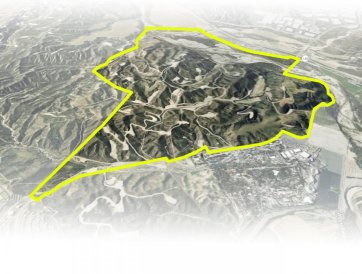 SCOPE has opposed the 21,000 unit Newhall Ranch project in the Santa Clarita Valley for over two decades. We have always felt that auto oriented urban sprawl is not the answer to our housing needs and will only aggravate climate change and the need for more fossil fuel extraction. Its impacts to the Santa Clara River, Los Angeles County’s last free-flowing river, several threatened and endangered species and questions over water supply are continuing concerns. But another concern was also in the forefront – building residential units over an old oil field.
SCOPE has opposed the 21,000 unit Newhall Ranch project in the Santa Clarita Valley for over two decades. We have always felt that auto oriented urban sprawl is not the answer to our housing needs and will only aggravate climate change and the need for more fossil fuel extraction. Its impacts to the Santa Clara River, Los Angeles County’s last free-flowing river, several threatened and endangered species and questions over water supply are continuing concerns. But another concern was also in the forefront – building residential units over an old oil field.
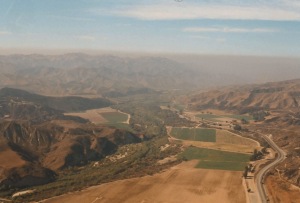 As most people probably already know, Newhall Ranch is a massive project located along Los Angeles County’s last free flowing river, the Santa Clara. It will pave over 1500 acres of prime farmland, fill the flood plain with 7 million cubic yards of dirt, levy a portion of the river and concrete tributaries, some of the very things that the City of Los Angeles is spending hundreds of millions of dollars to undo along the Los Angeles River.
As most people probably already know, Newhall Ranch is a massive project located along Los Angeles County’s last free flowing river, the Santa Clara. It will pave over 1500 acres of prime farmland, fill the flood plain with 7 million cubic yards of dirt, levy a portion of the river and concrete tributaries, some of the very things that the City of Los Angeles is spending hundreds of millions of dollars to undo along the Los Angeles River.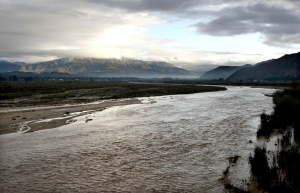
 (Choose the one or two that interest you, and/or choose your own). It’s important that these agencies hear from you and me!
(Choose the one or two that interest you, and/or choose your own). It’s important that these agencies hear from you and me! Sustainable Pumping of the Santa Clara River Alluvial Aquifer? – Hardly!
Sustainable Pumping of the Santa Clara River Alluvial Aquifer? – Hardly!

 opponents who raise this issue do so in the context of the Proposed Facility’s proximity to a school, a park,and residences. As explained above, the Council is specifically precluded from considering any alleged health or environmental effects of RF emissions, including where, as here, those concerns are raised through the proxy of property values and aesthetics.”
opponents who raise this issue do so in the context of the Proposed Facility’s proximity to a school, a park,and residences. As explained above, the Council is specifically precluded from considering any alleged health or environmental effects of RF emissions, including where, as here, those concerns are raised through the proxy of property values and aesthetics.”